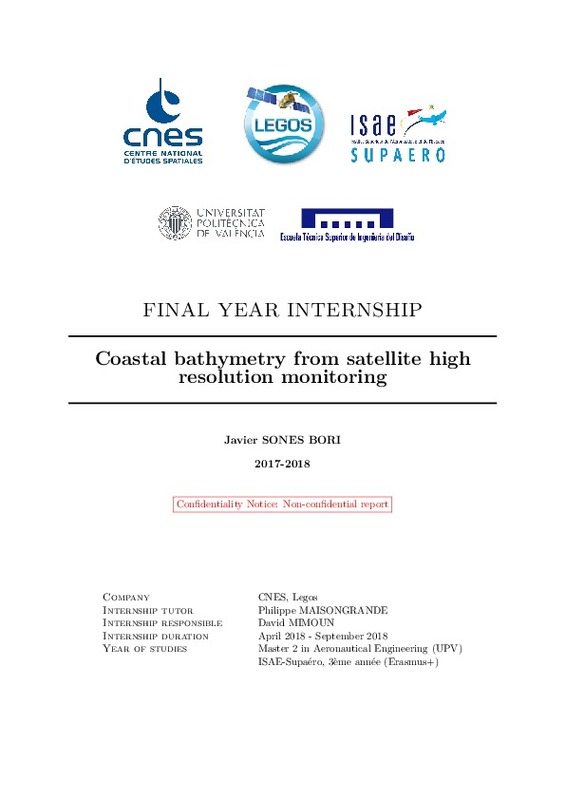JavaScript is disabled for your browser. Some features of this site may not work without it.
Buscar en RiuNet
Listar
Mi cuenta
Estadísticas
Ayuda RiuNet
Admin. UPV
Coastal bathymetry from satellite high resolution monitoring
Mostrar el registro completo del ítem
Soñes Bori, J. (2019). Coastal bathymetry from satellite high resolution monitoring. Universitat Politècnica de València. http://hdl.handle.net/10251/140103
Por favor, use este identificador para citar o enlazar este ítem: http://hdl.handle.net/10251/140103
Ficheros en el ítem
Metadatos del ítem
| Título: | Coastal bathymetry from satellite high resolution monitoring | |||
| Autor: | Soñes Bori, Javier | |||
| Director(es): | Maisongrande, Philippe | |||
| Entidad UPV: |
|
|||
| Fecha acto/lectura: |
|
|||
| Resumen: |
[EN] Bathymetry is traditionally obtained by echo sounding technology. However, bathymetry can
be also obtained from satellite imaging, which is much more cheaper than echo-sound measurements. This is obtained by analyzing ...[+]
|
|||
| Palabras clave: |
|
|||
| Derechos de uso: | Reserva de todos los derechos | |||
| Editorial: |
|
|||
| Titulación: |
|
|||
| Tipo: |
|
recommendations
Este ítem aparece en la(s) siguiente(s) colección(ones)
-
ETSID - Trabajos académicos [8906]
Escuela Técnica Superior de Ingeniería del Diseño







